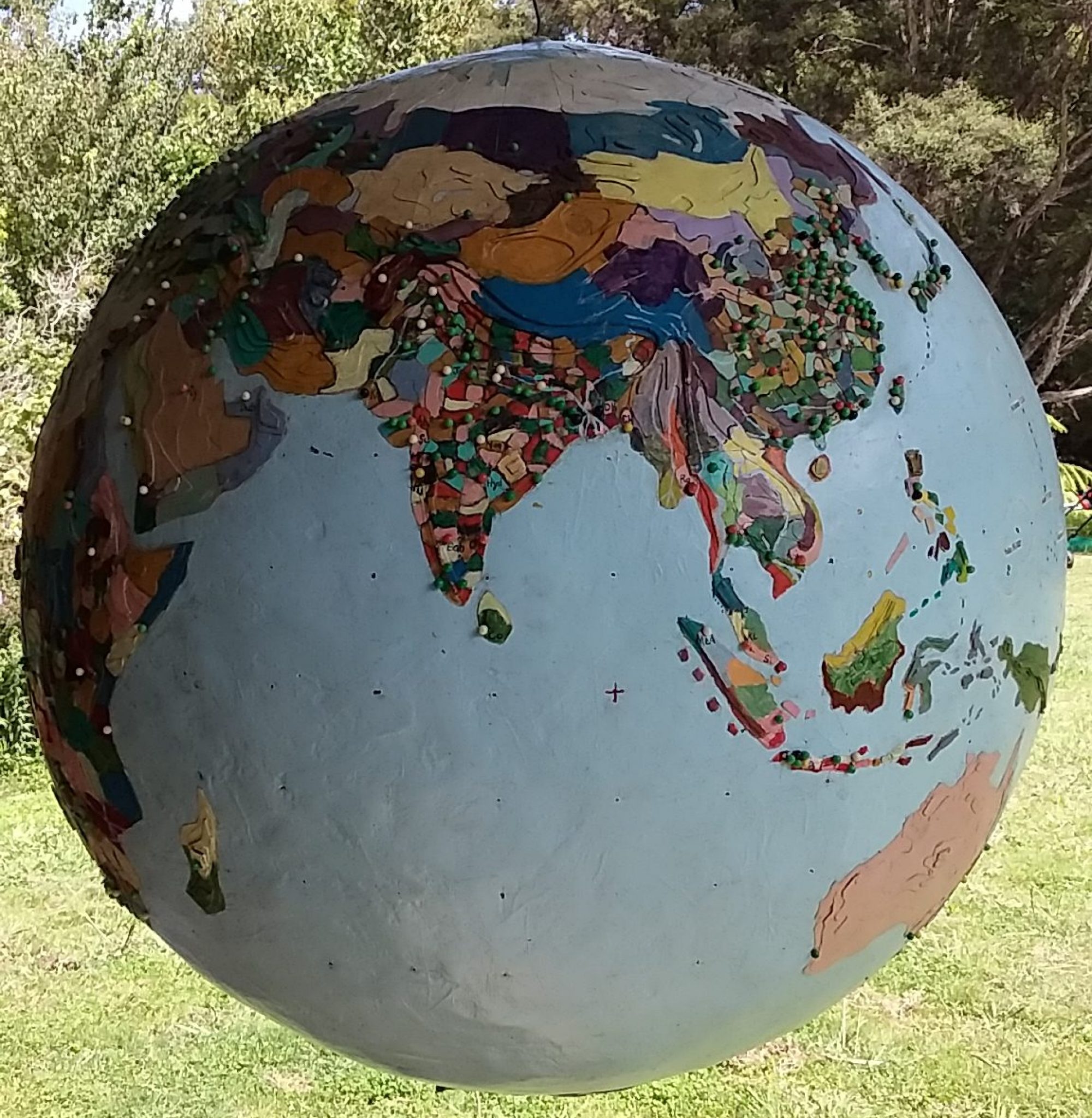Sahara
Millisphere (noun): a discrete region inhabited by approximately 1000th of the total world population.
“We live in a globalised world, it can’t be just goods, it’s also human beings,” said one African migrant in Libya heading for Europe. March/April/May/June is the peak time for crossing the Mediterranean and it is estimated that this year 200,000 Africans will cross the Sahara and 150,000 will cross the Mediterranean.
Boundaries imposed by 19th century colonial powers divide the millisphere of the Sahara between, Algeria,Tunisia, Libya, Mali, Niger and Chad. If there is one group that can call the Sahara their home it is the Tuareg (population two million) who traditionally carried high value goods (salt, gold, ivory and slaves) from one oasis to another. The Sahara crossing by camel took about 40 days and today it still takes several days – 25 passengers to a Toyota pickup.
It is thought more migrants travelling to Europe die crossing the Sahara than crossing the Mediterranean but back in 1982 when Bruce and Mary hitch-hiked across the Sahara it was still safe for tourists. “We didn’t know where we going really,” said Bruce, who now lives in Aramoho.
They arrived in Tunis by ferry from Sicily. An Algerian took them to the first oasis and on a truck carrying vegetables they took two days to get to Tamanrasset, in the middle of the Sahara, “where vegetables in the market were really expensive”. The road to Agadez in Niger was littered with wrecked vehicles Bruce remembered.
Agadez is where African travellers from all over the Economic Community of West African States come to buy a ride to Tripoli in Libya. The migrants are not dirt poor farmers – you have to have money to travel. Typically a family will scape together a large sum to send a family member to Europe to send back remittances – as poor countries develop their emigration rates rise.
The Tuaregs have historically shared the Sahara with other travellers including Muslim traders, adventurers and black slaves. The millisphere of Sahara can be visualised as a road network – sometimes extending into surrounding millispheres. Tuareg businessman, Mohamed Ali, owns Rimbo a Nigerian bus company specialising in moving migrants to Agadez. A burned out 727 from Venezuela was recently discovered on a desert landing strip in Mali – 25% of all Europe’s cocaine crosses the Sahara.
Conflicts arise at the desert margins, where nomadic pastoralists meet sedentary agriculturalists. The desert is advancing south into the Sahel at about one kilometer every two years. Planting a “green wall” of trees to halt the desert has been an expensive failure although in Burkina Faso simple “water farming” techniques (trenches following the contours) and protecting trees that grew naturally has managed to re-establish some firewood areas. The common myrtle Myrtus communis is distributed around the Mediterranean but the Saharan myrtle Myrtus nivelli is distributed around the the Sahara desert.
Bruce and Mary crossed from Niger into Burkina Faso and then to the Atlantic coast of Cote d’Ivoire at Abidjan. In Mali they got within one ride of Timbuktu, but that meant waiting for days for enough passengers to fill up the bus. Back in Ouagadougou (Burkina Faso) they pulled the pin and flew to Lyon in France.
In the early 19th century the French Geographic Society posted a reward of 10,000 francs for the first person to travel to Timbuktu – and back. In 1825 British soldier, Alexander Laing got there but was murdered two days later. In 1827 French butcher Rene Caillie got there and back and claimed the prize. The British thought Caillie was a “bad sport” for dressing in Arab robes and not full dress military uniform as Laing had.
In Timbuktu (Mali) there has been a collapse of foreign tourism due to armed Islamists, who also targeted Tinariwen for playing “Satan’s music.” Tinariwen, a band of Tuaregs from Mali played WOMAD in New Plymouth this year.
Jihadists attacks in Mali have sent refugees spilling into Burkina Faso where job seekers are now looking at the EU and tomato picking in Italy, where there are seasonal labour shortages, and Tinariwen are now living in the American south-west – in the Mojave desert.
